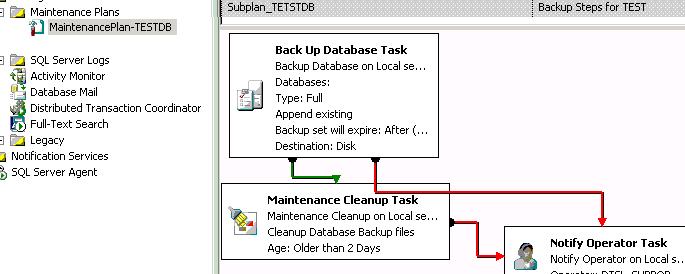How to create a database rolling backup in Microsoft SQL Server?

Our company uses Microsoft SQL Server 2005 as the database management system. We have several databases hosted on it. Everyday we create a scheduled backup using the Microsoft SQL Server Agent. The backup runs at 7 pm every night. Each backup runs up to around several gigabytes. We need to retain only 2 days backup on the production server and overwrite the older files. How do I go about doing a rolling backup for databases in Microsoft SQL Server?














